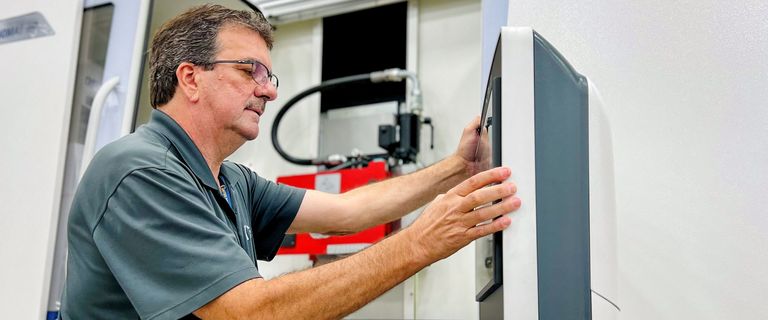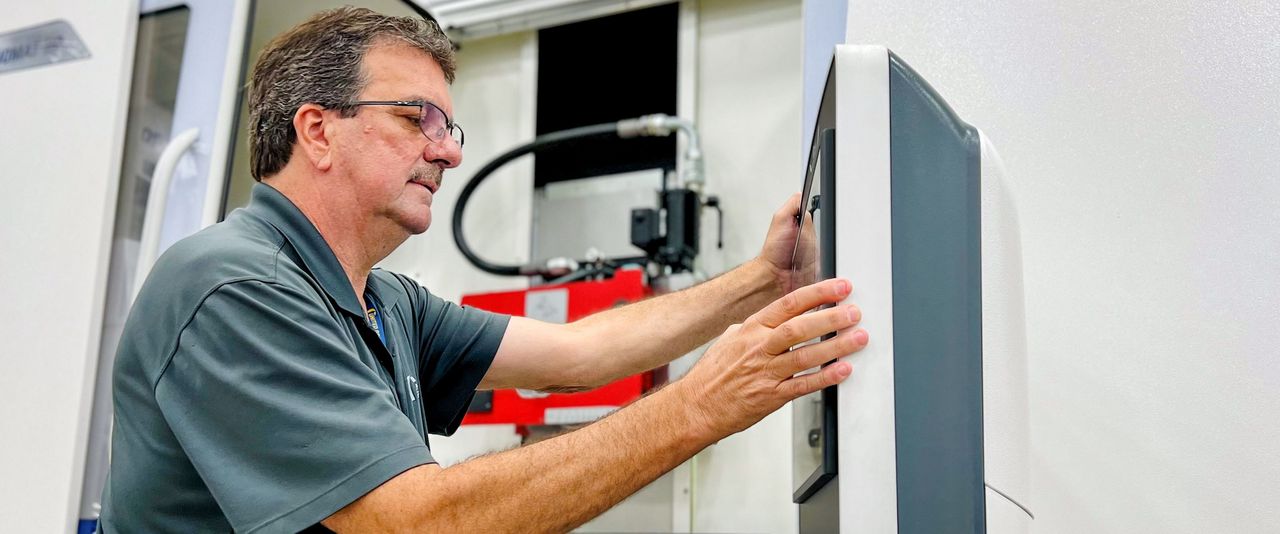All About the New BLOHM PLANOMAT Broach Grinding Configuration
When developing a new broach grinding configuration, nothing beats having someone looking over your shoulder who brings decades of practical experience to the design table. Robert Uren, Application Engineer for UNITED GRINDING North America, is a perfect example.
Our application engineers are a crucial value add to anyone who opts for UNITED GRINDING equipment. Simply put, their experience and collaboration skills help to optimize processes and create productive and lucrative applications.
That’s evident in the BLOHM PLANOMAT series, a surface and profile grinder that, thanks to the efforts of engineers like Robert, recently released a new broaching configuration.
Developing the BLOHM PLANOMAT Broach Grinding Configuration
Most of the broach grinders in use today are old machines, run by an aging workforce. “All the know-how is in their head,” Robert said. “You can have one broach shop with two guys making the same broach and each one goes about it in a different fashion.” No matter how experienced the operator, the process was labor intensive. For example, to set a broach up to grind a back taper, everything (length of bar, compensating forms, etc.) had to be calculated. Each tooth was required to be manually backed off, which also took a considerable amount of time.
BLOHM wanted to design a new type of broach grinder that combined reproducible precision, powerful speed and high flexibility with an operating system that would allow less-experienced machinists to become proficient quickly.
“The first attempt was a big cumbersome unit that took three to four hours to set up,” Robert said. “The second model was faster, incorporating a profile wheel and a spindle that came out and did the backoff grinding. But because of backoff spindle integration, this version was not cost-effective.”
The Game Changer
The third generation is an evolution that took things to the next level, introducing an even faster and more cost-effective machine, It featured an HSK spindle, which allowed operators to go from the small backoff wheel to a large 16-inch diameter profile wheel to a probe in seconds.
With the PLANOMAT, you can set tool on chuck against dead stop, and it has probing capability. It checks the location of the first tooth and pitch of the teeth and knows the distance between teeth and distance from first to last. Programming is easy. You populate all the geometric input fields, back taper, B/O angle, taper, etc., and the machine performs the calculations and grinds the broach. It’s a matter of cycle, start and it takes care of everything else automatically.
GripsProfile, a software enhancement available on the PLANOMAT, also adds to the productivity. Users can quickly and easily create contours for a grinding wheel that is to be profiled, making the relief grinding of broaching needles possible with the software.
All told, the broaching configuration on the PLANOMAT is an ideal fit for turbine broaches, steering rack broaches and a whole lot more.
Robert’s Influence
Robert’s contribution to the development of the PLANOMAT broaching configuration included working on some of the nomenclature, hook angles, sheer angles, sheer angle at the rack. Every aspect of the configuration reflects his 23 years of hands-on broach grinding experience.
He joined UNITED GRINDING in 2011, and his skills in problem solving quickly became apparent. “I’ve always worked on difficult grinding projects, so I don’t really know any better. I look at challenges with a different set of eyes because it’s how I was trained,” he said.
“The PLANOMAT series was a huge step forward for the tool-making industry,” Robert said. “It does it all in record time. There’s no way humans could do this by eye with the speed and precision of the BLOHM.”
If you would like more information on broach grinding with the BLOHM PLANOMAT, visit www.grinding.com or contact us at info@grinding.com.









